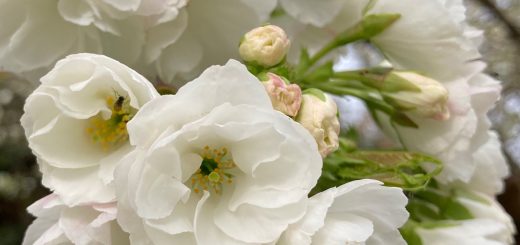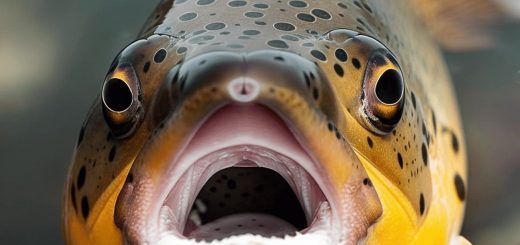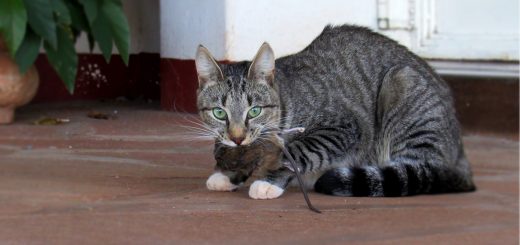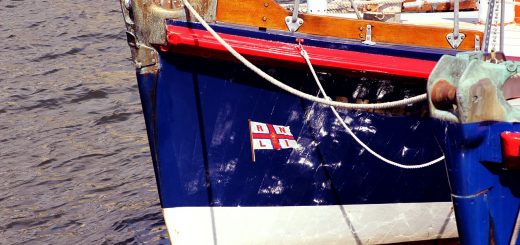Wild Pembrokeshire with David Gardner: Starlings – 2

Here is the second part of David Gardner’s fascinating look at starlings… You can read the first part here
“Oy, oy, oy! We don’t behave like that, do we?! Now, be nice to each other!” My partner, Lynne, was looking out of the kitchen window at the bird feeder just outside, and clearly the starlings were up to their tricks again. Lynne is usually very maternal towards all our feathered friends that come to feed so close, and will chat away to them and ask them how they are doing, but the starlings seem to bring out the school ma’am in her. It’s not too surprising as they regularly act like naughty kids in a playground, bickering, squabbling and scrapping as they jostle for position, or catcalling from the sidelines. Their bully-boy behaviour can be in stark contrast with the demure and sociable behavior of most birds at the feeders, but it has to be said that even blue tits can be a little feisty at times and we have all seen robins getting territorial.


Adult starlings are beautiful birds with their spectacular off-white spotted and metallic sheened plumage in green and violet and the wing and tail feathers delicately lined in light brown. The black ‘mask’ leading from the eye to the beak gives them the raffish appearance of an outlaw, an appearance that is often matched by their behaviour. In the spring, the males lose the spots on the breast and gain a blue-grey patch at the base of the bill. Young birds are an overall drab grey-brown colour initially and, although the plumage takes on some of the adult speckling and colouration later in the year, they still retain a distinctive brown head in their first winter, making them instantly recognisable.



Starlings can appear as purposeful individuals as they strut about the lawn or meadow with jerky, energetic movements pecking at the surface for seed and grain, or probing with spear-like beaks for grubs and worms hidden in the soil. If another bird comes too close, there will be an instant open-beaked chattering demand for space, which, if not given, will result in both birds leaving the ground in a short-lived aerial flurry of wings, claws and beaks before settling down again to their search for food. This sense of individuality is instantly dispelled as soon as the flock is disturbed and takes to the air, however, as the individuals then become part of a larger whole, a composite being that has one motion, one existence and one voice, like a seventh wave surging up a storm beach. How a flock of thousands of birds can fly together as one in such large groups (murmurations) without colliding has puzzled scientists for many years, and only now, with the use of new technology has some understanding been reached as to what happens within a flock.

Research in Italy, the US and elsewhere has shown that starlings monitor the movements of their nearest neighbors and then adjust their own flight speed and direction accordingly. Apparently seven is the magic number of neighbours that are required for a bird to monitor and respond to successfully, and, as an individual can react to another bird’s movement in 100 milliseconds (much faster than we humans), this allows the group of starlings to move in a way that makes them appear as a single entity. No evidence has been found to support suggestions that there is a leader in each formation that chooses the flight pattern for the rest to follow, that the birds communicate with each other through telepathy, or that a single starling communicates with all of the birds in each group.

Grouping together in this way, as with shoaling fish, is believed to offer safety in numbers – predators such as peregrine falcons find it hard to target one bird in the middle of a hypnotising flock of thousands. Those on the outside of the group will tend to be more vulnerable to attack, so individual birds keep trying to change their place in the flock. There is a tendency for birds to try to fly alongside each other thereby giving greater depth to the structure as well as giving birds better sight of each other, but what stimulates some to veer off and create smaller groups to go to different location from the majority is a mystery.
Starlings gather in large communal night-time roosts in places that are sheltered from harsh weather such as woodlands, reedbeds, cliffs, buildings and industrial structures, including the pier at Aberystwyth. These huge communal gatherings, which will attract individuals from over 40km away, allow birds to keep warm, avoid predators and exchange information, such as the location of good feeding areas. During the day, they will form temporary daytime roosts at exposed places such as treetops, where the birds have good all-round visibility.
In the light of these apparently large congregations at this time of year, it is surprising and shocking to learn that starling numbers have declined markedly across much of northern Europe and the UK in recent years. The decline in the UK started during the early 1980s and has continued ever since, long-term monitoring by the British Trust for Ornithology (BTO) and others showing that starling numbers have fallen by between 66% and 85% in Britain since the mid-1970s. Because of this decline in numbers, the starling is red listed as a bird of high conservation concern. The cause of this decline is not certain, but it is believed to be due to the loss of permanent pasture, increased use of farm chemicals and a shortage of food and nesting sites in many parts of the UK. Urgent research is ongoing and it is to be hoped that an answer can be found soon to reverse this downward trend.

In about 6–8 weeks, the continental starlings will start to leave Pembrokeshire and return to their home bases for the summer. It is then that the true picture of our native Pembrokeshire populations will become apparent and any starlings that you are lucky enough to have visiting your gardens then should be made to feel at home and not complained about when they squabble for food on your bird table. Take the time to watch them and discover why they are such a wonderful part of our local natural heritage.

Please note that all the images displayed here are protected by copyright and we have David’s kind permission to use them. David Gardner has a background in the environmental and conservation fields having been, inter alia, a salmon and trout farm manager, fisheries and conservation manager with the National Rivers Authority, and chairman of the Wildlife Trust of South and West Wales. He is also a dealer in art and antiques, which must go some way to explaining what a great eye he has for creating beautiful images of the world around us. He can supply high-quality prints of these and other images to order, and he is happy to accept commissions if you have special subjects in mind.
Text and photographs ©David Gardner
Contact him at David4Rugs@aol.com
Website: https://davidgardnerphotography.com
Or on his Facebook pages https://www.facebook.com/Piscesenvironmentalservices/
Text and photographs are copyright of David Gardner





















I love starlings too. Thanks for these articles.
You’re welcome, Rob. I’m glad you enjoy the birds and the articles. Best wishes, David